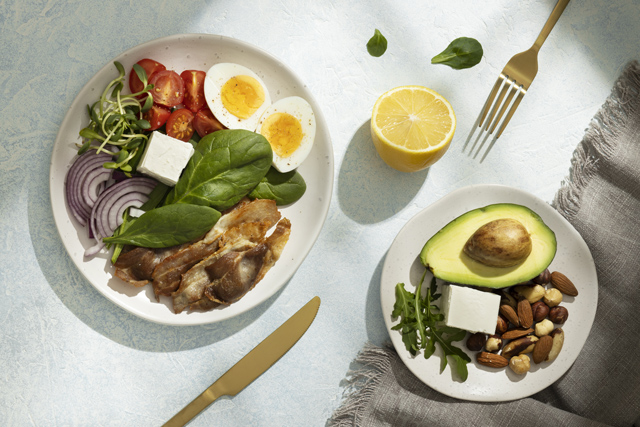
What to Look for When Booking Accommodation with a Young Child

If you or a loved one lives with a food intolerance—whether it’s gluten, dairy, or something else—traveling can seem daunting at first. Suddenly, it’s not just about planning accommodations and activities, but also about figuring out where and how to eat safely on the road.
But having dietary restrictions doesn’t mean you have to give up the joy of travel. Yes, it takes a bit more planning, but trust me—it’s worth it! That’s how we travel, too—my husband follows a gluten- and dairy-free diet, so we understand the challenges firsthand. In the beginning, it was tough and sometimes even disheartening. But over time, we found our rhythm. Now, we see his sensitivities not as a limitation, but as a way to travel more mindfully. And guess what? Our trips are just as enjoyable (and safe!) as they were before food intolerances came into the picture.
Here are some practical tips to help you explore the world safely and joyfully—even if your diet needs extra attention:
1. Plan Your Meals Ahead of Time
Before you leave, do a little research:
Tip: Check out reviews on HappyCow.net or Google Maps, and join local food intolerance groups on Facebook. You’ll find tons of first-hand tips from others with similar needs!
2. Pack Smart – Always Have a “Plan B”
When traveling with food intolerances, your best friend is preparation. Even if everything is perfectly planned, unexpected delays or issues can pop up—flight cancellations, long security lines, or a broken vending machine. That’s why we always carry snacks: gluten-free bread, cookies, fruit, or allergy-friendly bars. These small things can be lifesavers.
Note: On flights, liquids over 100 ml are restricted, so stick to solid foods like sandwiches or pre-cut fruit.
Even if the airline offers special meals, don’t rely on them blindly. Double-check packaging, read the ingredients, and don’t hesitate to ask questions—it’s better to be safe than sorry. Disinfectant wipes are also a must—clean your seat and tray table to reduce contact with allergens.
Before your trip, identify nearby allergy-friendly restaurants. Read reviews, browse menus, and if possible, contact them in advance. If the language is a barrier, a printed Diet-Friendly Restaurant Card in the local language can work wonders. We always carry our own multilingual version, and it has opened many doors. In most cases, clear and polite communication makes all the difference.
Online travel forums and app comments are treasure troves of tips from others traveling with similar needs.
So: pack smart, plan ahead, and remember—awareness doesn’t limit you; it sets you free.
3. Prepare to Communicate – Don’t Let Language Hold You Back
Eating safely in a foreign country can be intimidating, especially if you don’t speak the local language. But don’t worry—there’s a simple solution: bring a well-written food allergy card. It’s a small multilingual card that clearly states which ingredients you need to avoid—whether it’s gluten, dairy, nuts, or anything else.
You can download our WanderingKite Diet-Friendly Restaurant Card for free and instantly take a big step toward stress-free dining.
From experience: if you communicate politely and clearly, most servers and chefs are very accommodating. The card eliminates confusion—even when there’s no common language. Still, to be extra safe, it’s a good idea to research a few trustworthy places in advance. Forums, travel apps, and reviews are packed with helpful insights.
Looking for more tools? International sites like SelectWisely or Equal Eats offer pre-made allergy cards for almost every dietary need.
Bottom line: don’t let language barriers stop you. With a little preparation—and a friendly smile—you can eat well and safely almost anywhere in the world.
4. Choose Accommodation Wisely – A Kitchen Can Be a Game-Changer
When you’re on a special diet, having access to a kitchen is a huge relief. For us, it’s practically a must. We always look for places with at least a small kitchenette. You can easily find such apartments on booking.com, hotels.com, expedia, vrbo, airbnb.com.
With your own kitchen, you can prepare your own breakfast and dinner, which is not only safer but also more convenient—especially on longer trips.
We usually head out right after breakfast and explore all day. A simple home-cooked dinner in the evening is more than enough. You don’t need to find a restaurant for every meal or compromise on dietary safety.
Pro tip: If you’re a Genius member on booking.com, you might even get complimentary breakfast. When that happens, we always hand over our WanderingKite Diet-Friendly Restaurant Card at check-in—it makes breakfast much easier, with no need to explain things every day.
To avoid surprises, we always plan ahead and hit a grocery store on day one to stock the fridge. Curious how we handle food shopping abroad? Check out our full guide here → [Insert article link]
The takeaway: having your own kitchen reduces stress and keeps your diet on track.
5. What (and How) to Drink Safely While Traveling
We mostly travel within Europe, but we still ask our hosts about the tap water. Even if you’re only using it to brush your teeth, it’s worth checking. In most European countries, tap water is safe to drink—even in restaurants. But if you’d rather play it safe, go for bottled water.
Always check the cap—an unbroken seal is a good sign. As charming as fountains may be, it’s best not to drink from them. The same goes for ice cubes, especially if you’re unsure of the water source. If you’re sensitive, caution is key—but hydration is always possible with just a bit of extra mindfulness.
6. Visit Local Markets – And Embrace Discovery!
Shopping at local markets is not only budget-friendly, but also a real cultural experience! Fresh fruits and veggies, local delicacies, and often a surprisingly wide selection of allergen-free packaged goods await.
We make it a point to visit at least one market on every trip. It’s not just about stocking up on ingredients—it’s about connecting with the culture. Practical tip: buy fruits you can easily peel, like bananas or oranges, to minimize contact with unknown surfaces or tap water. And always use your own knife—it helps ensure cleanliness and safety.
7. Be Flexible – But Always Listen to Yourself
One of the most important things on the road is learning to say no—and there’s nothing wrong with that. If you’re unsure about a dish, skip it. But don’t let fear rule your travels. The world is full of kind and accommodating people. Let them know what you need, and they’ll often be more than happy to help.
Flexibility and confidence go hand in hand—trust your instincts and stay open whenever possible.
Final Thoughts: Travel Boldly—On Your Own Terms
Traveling with food intolerances is far from impossible—in fact, more and more people are doing it every day. You can do it too! With a little preparation, awareness, and curiosity, there’s a whole world of new flavors, experiences, and cultures waiting for you.
Don’t let limitations define you—find your own path, one you can walk with confidence and joy. Because the world is waiting for you—just as you are.
@ Copyright - WanderingKite | All rights reserved! | Privacy Policy